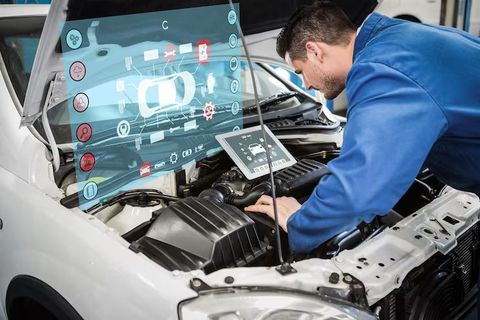Explore the Basics of Electric Kitchen Composters: A Complete Guide
Electric kitchen composters are compact appliances designed to convert food waste into nutrient-rich compost quickly and efficiently. Unlike traditional composting methods, which rely on outdoor bins and longer decomposition periods, electric composters use heat, aeration, and grinding mechanisms to accelerate the process.
These devices exist because modern urban living often limits access to outdoor space and time for traditional composting. They allow households to manage organic waste indoors, reduce landfill contributions, and create a valuable resource for plants and gardens.
Electric kitchen composters handle a variety of food scraps including vegetable peels, fruit cores, coffee grounds, and small leftovers, providing a practical solution for sustainable living.

Importance
The significance of electric kitchen composters has grown in recent years due to environmental, social, and practical factors:
-
Waste reduction: Diverts organic material from landfills, reducing methane emissions and overall waste volume.
-
Soil enrichment: Produces nutrient-rich compost that can enhance indoor plants or community gardens.
-
Convenience: Offers a compact, odor-controlled solution for urban households or apartments without backyard composting options.
-
Sustainability awareness: Encourages households to adopt environmentally responsible practices.
Electric composters benefit urban residents, environmentally conscious households, and anyone looking to integrate sustainable practices into their daily routine. They address the problem of food waste while supporting the global push toward circular economy practices.
Recent Updates
Several trends and innovations have emerged in the electric kitchen composter space during 2024–2025:
-
Faster composting cycles (2024): Some models now process food waste in as little as 4–6 hours, improving efficiency for busy households.
-
Smart sensors and app connectivity (2025): New devices monitor moisture, temperature, and compost readiness, often providing notifications via smartphone apps.
-
Odor control improvements (2024): Advanced filters and air circulation technologies have reduced unwanted smells, making indoor composting more feasible.
-
Energy-efficient designs (2025): Manufacturers are introducing appliances that use minimal electricity while maintaining optimal processing conditions.
-
Integration with sustainability programs (2025): Cities and municipalities are increasingly supporting home composting initiatives, providing guidelines or incentives for residents adopting electric composters.
These updates highlight the role of technology in making composting more accessible, efficient, and environmentally responsible.
Laws or Policies
Regulations and government programs can affect the use and acceptance of electric kitchen composters:
-
Local waste management regulations: Some municipalities encourage or mandate composting programs to reduce landfill usage. Home composters may fall under guidelines specifying the types of waste allowed.
-
Safety and appliance standards: Electric composters must comply with local electrical appliance regulations, ensuring safe operation in domestic settings. Examples include UL certification in the United States or CE marking in Europe.
-
Environmental incentive programs: Certain cities or regions offer subsidies, rebates, or educational programs for residents adopting composting systems, including electric models.
-
Organic waste reduction targets: Governments promoting sustainability and circular economy practices may encourage the use of home composting as part of broader waste reduction strategies.
Understanding these policies ensures that users comply with regulations while maximizing the environmental benefits of electric kitchen composters.
Tools and Resources
Several tools and resources support the effective use of electric kitchen composters:
-
Compost calculators: Online tools help estimate the amount of food waste generated and potential compost output.
-
Moisture and pH test kits: Help monitor compost quality for optimal nutrient content.
-
Educational guides and webinars: Many environmental organizations provide step-by-step instructions for managing home composting systems.
-
Smart appliance apps: Allow users to track composting cycles, temperature, and humidity remotely.
-
Community programs: Local councils or gardening groups may provide advice, workshops, or resources for indoor and outdoor composting.
FAQs
What materials can be added to an electric kitchen composter?
Electric composters handle most fruit and vegetable scraps, coffee grounds, eggshells, and small leftovers. Avoid meat, dairy, and oily foods in most household models.
How long does it take for food waste to become compost?
Modern electric kitchen composters can process organic waste in 4–24 hours, depending on the model and type of material.
Are electric composters energy-efficient?
Yes, newer models use low electricity while maintaining optimal heat and aeration, making them suitable for indoor use without significant energy consumption.
Do electric kitchen composters produce odor?
Advanced models feature filters and airflow systems to minimize odor. Proper maintenance, such as cleaning and adding dry materials if needed, further reduces smell.
Can the compost be used for indoor plants?
Yes, the end product is nutrient-rich and suitable for indoor plants, potted gardens, or even outdoor gardening if allowed by local regulations.
Conclusion
Electric kitchen composters offer a practical and efficient way to manage household food waste while supporting sustainable living. They combine technology, convenience, and environmental responsibility, making composting accessible to urban households and apartments.
With modern features like smart sensors, rapid composting cycles, and odor control, electric kitchen composters have evolved beyond simple appliances into tools that help reduce waste and enhance soil quality.






